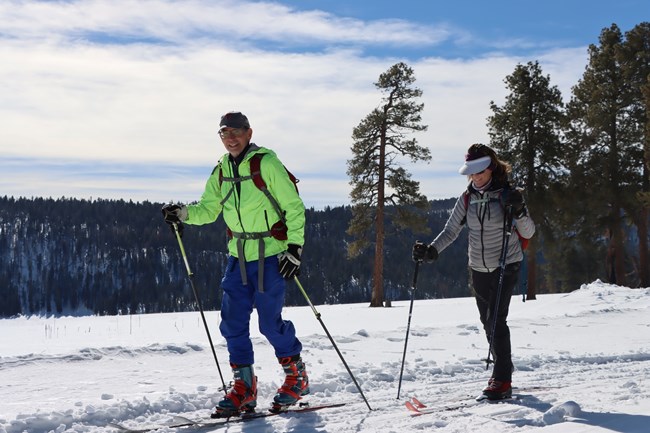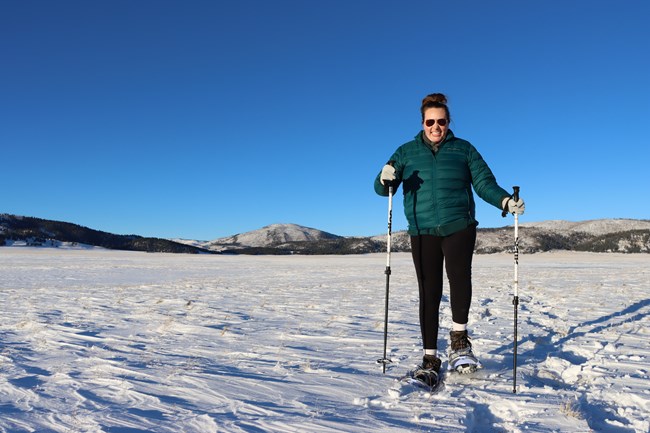
NPS Winter is a spectacular time to visit Valles Caldera National Preserve. The park has miles of trails for the adventurous skier and snowshoer. Remember that you are traveling in an environment with unpredictable wildlife, changing weather conditions, deep snow, and snow covered streams. Your safety is not guaranteed. Be prepared for any situation and know the limits of your ability. With a little bit of preparation and know-how, many exciting activities await you. Be sure to layer up with insulating, waterproof clothing, wear sunglasses, use sunscreen and carry water. Finally, familiarize yourself with winter trail etiquette before you visit. Cross-Country SkiingPicture yourself gliding through an open valle or a silent forest full of fresh powder. Cross-country skiing is a rejuvenating sport that pairs physical exercise with the beauty of nature. You will need skis and poles with large baskets. Waterproof pants or gaiters help keep you warm and dry. In general, terrain and deeper snows on north slopes make for better for cross-country skiing, but you are welcome to strap on your skis throughout the park.

NPS/L. Ray SnowshoeingWinter snow depths at Valles Caldera average between 1 and 2 feet, which is too deep to hike comfortably. Snowshoeing is a great alternative! It's as easy as strapping snowshoes on your boots and grabbing a couple of poles. No training is necessary, and, if you can hike, you can snowshoe. Most park trails can be explored with snowshoes. A few pieces of equipment are essential: you will need a pair of snowshoes and waterproof boots. Poles are helpful for maintaining balance, but optional. Waterproof pants or gaiters help keep you warm and dry. Ranger ProgramsExplore winter soundscapes on a cross-country ski tour. Let the light of the full moon guide you on a snowshoe hike in Valle Grande. Warm your fingers by a toasty fire while listening to storytellers. 
NPS Important Tips
Seasonal ConditionsSnow volume varies from year to year, so check our Current Conditions page for up-to-date information. The ski and snowshoe season usually lasts from mid-December to mid-March. The trails are open all year to hiking, biking, and horseback riding. |
Last updated: November 15, 2024

